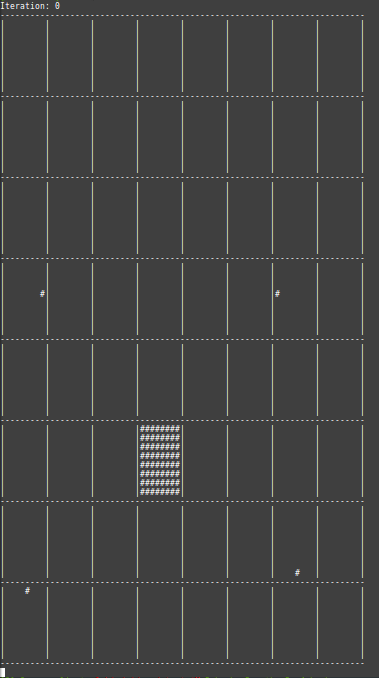Midgard, Growing Grass, Part 2
(2020-01-29)
In the previous post, I attempted to find an efficient algorithm to have grass grow along a field of bits, where the bitfield is defined recursively. I think I have managed to figure it out.
The grass growing occurs in two phases. First, all new growth is found. Second, the new growth is applied to the bitfields, and any completely full or completely empty bitfields are removed.
The first step is the hardest, because the data structure does not have many constraints. A bitfield’s value does not necessarily define the value of any tiles at all, because it may be overridden by a smaller grid. Or, it may be overridden, but only partially.
The key was processing each tile recursively. If a subfield exists, then that subfield needs to be recursed into. If a subfield’s neighbor exists, then it still needs to be recursed into, in order to handle detail at that level. If a subfield doesn’t exist, and if none of its neighbors exist, then the border is entirely defined by the values stored at the current level, and required changes can be determined without any additional recursion.
This is aided by the addressing scheme of bitfields. The bitfield address contains the location in the top-most bitfield as its highest bits, then the next level down, then the next. The layer is stored in the bottom 4 bits, but in reverse order. This way, iterating through the addresses in order performs a depth-first search of the bitfields. Whether a bitfield or any of its subfields exist can then be determined in $\mathcal{O}(\log n)$ time.

The lines in this animation show the divisions between the different 8x8 grids making up a large 64x64 grid. The edges are also defined to wrap around each other in this instance.